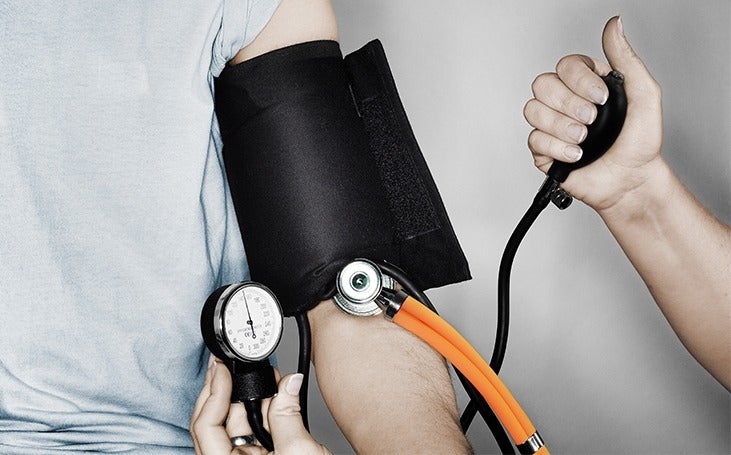The Low-Down On High Blood Pressure

High Blood Pressure? Reduce Your Numbers Now!
According to the American Heart Association, almost half of adults in the United States have high blood pressure. If untreated, high blood pressure (hypertension) can damage your circulatory system, and puts you at risk for heart disease and stroke.
What is high blood pressure?
Your blood pressure is measured by two numbers. For example, 120/80 is considered a “normal” or healthy blood pressure. The top number (120) is your systolic number, describing the amount of pressure in your arteries during the contraction of your heart. The bottom number (80) is your diastolic number, describing your blood pressure between heart beats.
Anyone can develop high blood pressure. Learning what the numbers mean and whether you’re at higher risk for hypertension is key to keeping your overall heath in check.
6 ways to manage high blood pressure without medication
If you have high blood pressure, you can make lifestyle changes to reduce your numbers.
1. Stay Active
Physical activity can actually lower your blood pressure but, according to the American Heart Association, only about 1 in 5 Americans gets enough exercise. Just 30 minutes a day of physical activity can make a big difference in your overall health and well-being. It’s important to match your activity to your needs and abilities. There are many ways to be active, such as walking, biking, swimming, doing yard work, joining a yoga class, and more. Before starting an activity program, talk to your doctor about what is appropriate for you.
2. Strength Activity
While cardio is great for you, lifting weights or incorporating strength training into your regular gym routine is important to reverse the effects of steady muscle mass loss over time.
3. Eat Well
Your daily food choices make a big difference in your overall health and blood pressure. According to the American Heart Association, a heart-healthy diet includes plenty of fruits and vegetables, whole grains, low-fat dairy products, skinless poultry and fish, nuts and legumes, and non-tropical vegetable oils.
Try to limit saturated and trans fats, red meat, added sugars, and sodium. More than 70% of the sodium that Americans eat comes from processed and restaurant foods. Other common foods containing high amounts of sodium include canned soups, lunch meats, and frozen dinners.
4. Lose Weight
If you are overweight, losing as little as 5 to 10 pounds may help lower your blood pressure. Talk to your doctor about a healthy approach to weight loss that includes increasing your physical activity, lowering the number of calories you take in, and improving the overall quality of your diet.
5. Limit Alcohol
Drinking too much alcohol can have negative effects on your blood pressure. According to the Dietary Guidelines for Americans 2020-2025, published by the U.S. Department of Health and Human Services and the U.S. Department of Agriculture, adults of legal drinking age can choose not to drink or to drink in moderation by limiting intake to 2 drinks or less in a day for men and 1 drink or less in a day for women.
6. Relieve Stress
An often overlooked component to high blood pressure is how well you manage stress. Stress by itself has not been proven to cause high blood pressure, but reacting to a stressful situation by overeating, smoking, or drinking alcohol can negatively affect your blood pressure. Having a healthy way of dealing with stress like exercising, practicing yoga, or meditating can help your body avoid a surge in blood pressure during stressful situations.
